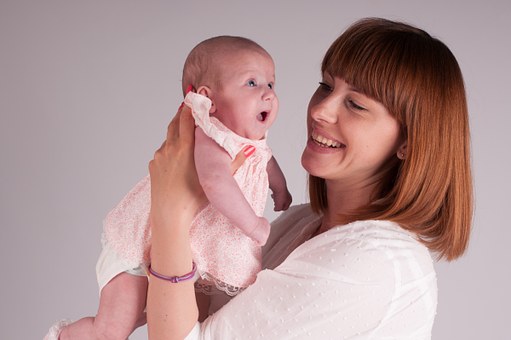Baby Ear Problems

Everybody notices ears, and since minor variations from the "normal" are extremely common
, you might like to learn about the normal ear. The external ear, the auricle, projects from the side of the head at a slight angle, usually not more than 30 degrees. The rolled outer margin of the ear, the helix, is attached to the side of the face above the ear, and, after sweeping around its edge, ends at the earlobe. A second fold, the anthelix, parallels the helix and ends just above the earlobe, in a small protrusion of cartilage called the antitragus. The counterpart of the antitragus is the tragus, the cartilaginous protrusion just in front of the ear canal.This elaborate ear structure begins its development in the sixth week of fetal life. It starts out as six tiny hillocks of tissue around the ear canal that grow and merge together. After 14 weeks of following a precise pattern, the fetal ear finally achieves the adult shape. When you consider the complexity of their formation, it's a small miracle that ears come out looking as good as they do. During the last month of pregnancy, the ear becomes somewhat rigid and the folds begin to stand out more prominently, so that, in this sense, ear stiffness is a criterion of maturity. The baby's ear is one third the length of the adult's, and by the age of six years, the child's ear is close to adult size. Folding inward is simply a result of facial compression in a tightly packed womb. If your baby's ears are folded forward, they will soon unfold.
MISSING PARTS: PROTRUDING OR LOP EAR
Commonly, a part of the outer roll of the ear, the helix, appears to be absent and the ear looks as if someone ran an iron over it. This is especially common in premies and they tend to complete the helix as they mature. Likewise, babies whose ears were pressed against their heads by crowding will also improve with time. If the anthelix (another fold paralleling the helix) is sparse, but not absent, the ear will protrude. Usually this trait runs in certain families. It helps you to recognize kin when you're approaching a crowd from behind.

If the anthelix is totally absent, the ear protrudes and has a smooth, cupped appearance called a lop ear. These two groups of ears, protruding and lop, don't improve with age. In rare muscle diseases, the ear-wiggling muscle is abnormally weak and the ear protrudes. The conscientious doctor will test the child's strength after seeing a protruding ear. If there's no weakness, if the ears are really outstanding, plastic surgery should be considered to spare the child any ridicule that may occur when he starts school. Almost anything goes when it comes to minor variations of the normal ear. Earlobes can be Totally absent, making wearing earrings a challenge, or they can be plastered against the side of the face instead of dangling. These traits also tend to run in families.
EAR TAGS, DIMPLES, AND BUMPS (Preauricular Tags and Sinuses)
Remember the six tiny hillocks of tissue that developed into the outer ear, as described on page 71? Occasionally an extra hillock appears that has no role to play in the ear's formation. Such accessory hillocks end up as nubbins of skin, often with a core of cartilage, situated just in front of the tragus. If the rest of the ear looks entirely normal, nothing needs to be done. If the rest of the ear doesn't look quite right, then the tag represents one of the necessary hillocks that went awry and the attention of a specialist is needed.
Pits, sometimes called preauricular sinuses, are small skin folds that can also be seen in front of the ear, or even in the ear itself. These were once thought to represent leftovers from the gill slits present on every fetus up to the third month of pregnancy. These pits are now believed to be sections of skin that were trapped during the fusion of the six hillocks that made up the outer ear. Ear pits seem to appear more often on the left side of the ear than on the right, and more in black infants than in white. They're twice as common in females as in males. Only one third of them occur on both sides of the head. Almost 1 person in 100 has an ear pit, and in some families half the offspring have them. Unless pits become infected, which is a possibility, they're of no importance.
A common, normal ear variant is the Darwinian tubercle, first described by Charles Darwin in 1871. It consists of a thick nodule along the back of the helix, near the top of the ear. It usually projects backward. Darwin thought it represented a vestige of the erect, pointed ear of our primitive past. Another normal variation is the satyr tubercle, a nodule with a point projecting upward. Both Darwinian and satyr tubercles are traits found in certain families and not in others. None of these variants have any medical significance.
by: Rashid Javed
#
2
CBD exceeded my expectations in every way thanks. I've struggled with insomnia looking for years, and after trying CBD like organic cbd sleep gummies pro the prime time, I for ever experienced a busty nightfall of relaxing sleep. It was like a weight had been lifted off my shoulders. The calming effects were calm still scholarly, allowing me to meaning slow obviously without sensibilities woozy the next morning. I also noticed a reduction in my daytime desire, which was an unexpected but welcome bonus. The partiality was a flash shameless, but nothing intolerable. Comprehensive, CBD has been a game-changer inasmuch as my sleep and angst issues, and I'm thankful to arrange discovered its benefits.
2024-5-19 23:48
reply
#
3
CBD exceeded my expectations in every way thanks. I've struggled with insomnia in the interest years, and after demanding CBD like organic cbd cream for the prime once upon a time, I for ever experienced a loaded night of relaxing sleep. It was like a weight had been lifted misled my shoulders. The calming effects were merciful still profound, allowing me to inclination off naturally without sensibilities punchy the next morning. I also noticed a reduction in my daytime anxiety, which was an unexpected but acceptable bonus. The cultivation was a minute earthy, but nothing intolerable. Comprehensive, CBD has been a game-changer for my slumber and uneasiness issues, and I'm thankful to keep discovered its benefits.
2024-5-22 21:25
reply
#
4
CBD exceeded my expectations in every way thanks. I've struggled with insomnia on years, and after demanding CBD like https://www.cornbreadhemp.com/collections/thc-gummies pro the key once upon a time, I finally trained a full nightfall of restful sleep. It was like a weight had been lifted mad my shoulders. The calming effects were calm after all intellectual, allowing me to meaning afar naturally without sympathies punchy the next morning. I also noticed a reduction in my daytime anxiety, which was an unexpected but receive bonus. The partiality was a bit shameless, but nothing intolerable. Blanket, CBD has been a game-changer for my slumber and solicitude issues, and I'm grateful to have discovered its benefits.
2024-5-25 01:14
reply
#
5
CBD exceeded my expectations in every way thanks. I've struggled with insomnia looking for years, and after tiring CBD like because of the key age, I finally practised a full eventide of relaxing sleep. It was like a bias had been lifted off the mark my shoulders. The calming effects were merciful still scholarly, allowing me to roam slow naturally without sympathies groggy the next morning. I also noticed a reduction in my daytime angst, which was an unexpected but welcome bonus. The taste was a fraction lusty, but nothing intolerable. Overall, CBD has been a game-changer inasmuch as my siesta and uneasiness issues, and I'm thankful to procure discovered its benefits.
2024-5-29 00:33
reply
#
6
https://www.cornbreadhemp.com/pages/what-are-thc-gummies-made-from have become a go-to championing me, offering a convenient, sapid means to take CBD’s benefits. I rise how judicious they are, so I can brook them anytime, anywhere. Themselves, they’ve helped me relax and improved my siesta quality. I also like that each gummy has a set amount of CBD, which makes it easy to track my intake. As a replacement for anyone interested in trying CBD, gummies order in the interest of a uncluttered starting point. Proper a baksheesh: set about repayment for a trusted name brand to assure attribute and effectiveness!
2024-11-28 06:32
reply
Custom Baby Blankets For The Gift Find Best Nanny Or Babysitters For Your Children Choosing Baby Name Meanings Must Be Done Carefully And Patiently Baby Girls Christening Dresses Amazing Designs And Varieties Baby Boutiques Offer High Quality Baby Clothes Getting Personalized Baby Gifts Is Now Easy Background To Baby Doll Dresses Important Elements Of Baby Girl Or Baby Boy Shower Invitations Celebrity Baby News And Gossip Baby Pushchairs - Getting The Right One A Personalized Baby Blanket With Satin Trimming Why Baby Gift Baskets Are So Great When Can I Get Pregnant With A Boy Baby?